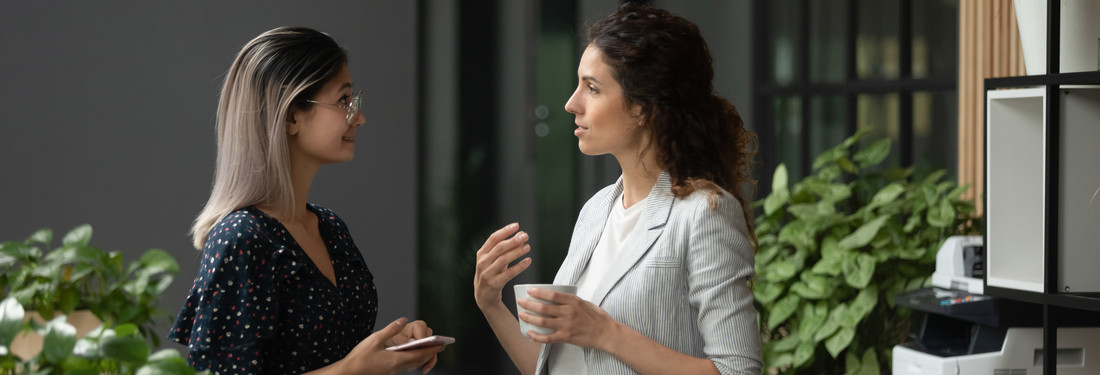How to achieve more connected communication by clearing mental ‘clutter’

Communication is a core skill for project professionals. You know that communicating with your team and other stakeholders is essential for successful delivery of a project.
And research has shown that positive work relationships lead to greater wellbeing and higher levels of mental health in the workplace. Connected communication goes deeper than a simple exchange of information. It’s essential to building genuine professional relationships. It helps people feel included within a team, and aware that they can talk through difficult issues when needed.
In my book Crafting Connection, I identify three dimensions of connection: within yourself, with others and with the wider communities within which you operate.
Starting with ourselves is crucial, as this is the common factor in all our interactions. And something that can hinder communication is our own mental ‘clutter’. This includes those thoughts, feelings and assumptions that cloud our ability to relate deeply to others. Workplace problems are often due to misunderstandings. These are more likely when we get caught up in our own thoughts and feelings to the extent that we don’t fully listen to and connect with others.
By clearing our own clutter, we can connect better with others. Here are some examples and ideas.
The ‘stories’ we tell ourselves
Do you ever approach a conversation with an inner narrative about the situation that triggers tension or anxiety? Noticing the ‘stories’ we tell ourselves is the starting point for challenging or changing them. We might like to reframe our inner talk so that it is more open and empowering. For example:
- “I know best” could be changed to “I’m interested in the other person’s ideas”;
- “I’m dreading this conversation” to “I’m well prepared”; and
- “They won’t like this” to “I’d like to understand their thoughts and feelings about this”.
There are different ways to think about a situation, and some are more empowering for you and for others.
We may not be consciously aware of some of the stories we’re telling ourselves. Asking ourselves the question, “What am I assuming here?”, can help surface unconscious narratives.
Internal confusion or conflicts
Sometimes we are conflicted about what we want. There may be an underlying tension that affects our ability to think clearly. For example, one part of us wants to take time to build relationships with our team, but another part feels pressure to get through our to-do list.
In this scenario, try asking yourself a ‘both and’ question. “How can I both build this professional relationship and make best use of my time?” It may be that brainstorming ideas with a colleague is an activity that both builds trust and understanding, and helps you identify ways to be more efficient.
When we start to identify and clear our own mental clutter, then we can go into a conversation with a better chance of open communication. We can metaphorically get out of our own way.
Clear clutter in your communication channel
In speaking with others, do what you can to keep a clear channel of communication open. It’s helpful to clarify your desired outcome and key points in advance. But, once you are in the conversation, aim to clear your mind, to stay present to the other person and to find out how they think and feel. A helpful tip is to go into a conversation with the clear intention to listen to the other person.
Distractions are a source of clutter between people which get in the way of effective listening. They include external interruptions such as noise, as well as internal distractions such as our own thoughts and emotions.
To clear this type of clutter, ask yourself: “What are my distractors?” Then identify ways to minimise them and bring your attention back to the other person.
Strategies to help with external distractions
- Shut down notifications and unnecessary screens;
- Find a quiet place for the conversation; and
- Make sure you’re physically comfortable.
Strategies to help with internal distractions
- Notice when your attention wanders and identify a quick way to bring it back to the present moment, and the other person. For example, when you find yourself getting distracted by your own opinions, try asking yourself, “I wonder what they think?”, and getting curious about their perspective.
- Acknowledge what you’ve heard before rushing in with your own view. Paraphrase what you’ve heard in your own words, and check that you’ve understood correctly.
- Ask questions to deepen your understanding of the other person’s view. This has the dual benefit of helping someone explore and articulate what they think, as well as helping you understand them better.
Being able to listen well to team members is a skill that can help people feel more connected at work. This is likely to lead to a happier, healthier, more effective project team.
You may also be interested in:


0 comments
Log in to post a comment, or create an account if you don't have one already.